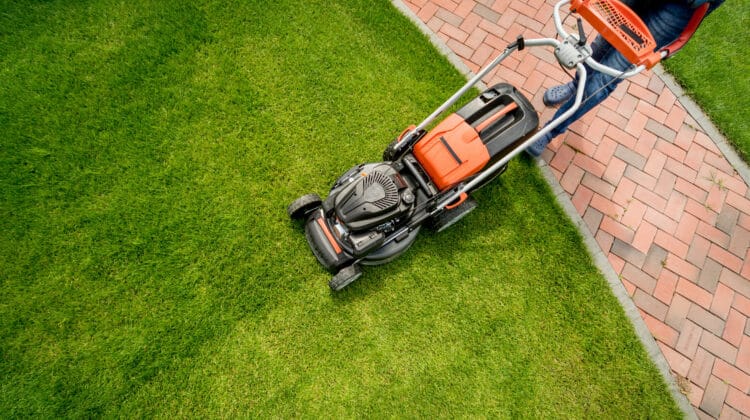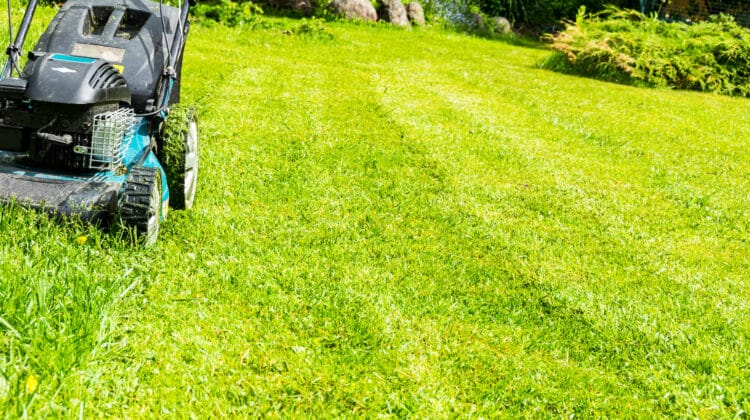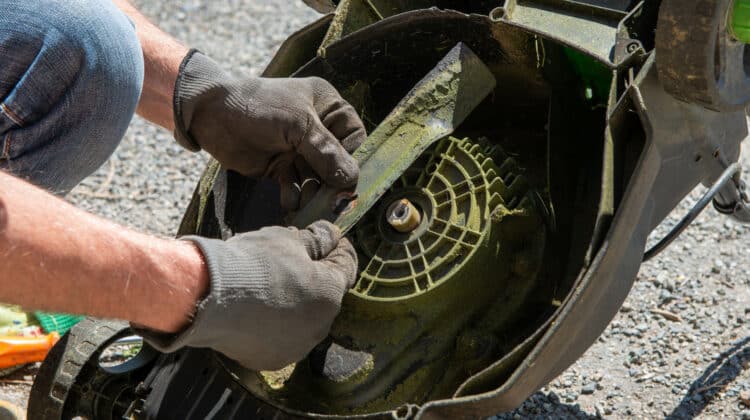If you need to move your riding mower from one place to another but don’t have a trailer, never worry. There are other ways to transport a riding lawnmower without using a trailer.
Do you own a truck with an open bed? If so, you can strap it tightly to the truck, and off you go.
Read this if you’ve been asking yourself how to transport a riding lawnmower without a trailer.
In this article, we will show you some ways to transport your lawnmower without a trailer, and we will also cover how to properly load the mower to your truck.
Table of Contents
Ways to transport your lawnmower without using a trailer
- Use a hitch-mounted mower carrier
- Uncouple the mower parts
- Use your truck
This item is sold online or in equipment warehouses around. With it, you can strap the mower to the back of your car and move it wherever. You might have to buy additional accessories to properly attach it to your vehicle and mount your mower on it.
The item can also be used to move bikes, and it is most ideal if the mower is a push or a foldable one. Riding mowers may not fit into it.
If you are moving house, it might be tough to find movers that can transport your mower along with other luggage. But this can be easier if you dismantle the equipment. Once you have uncoupled the parts, you can then arrange them neatly into their carrier or box for moving.
As we’ve mentioned, it is possible and pretty straightforward to load your mower onto your truck for transportation. If yours is a riding mower, then this is the next best option after the trailer.
We will show you how to load the mower to your truck below. You will need ramps and tie-down straps to do this.
How to load the lawnmower to your truck.
Follow these steps to secure your mower at the back of your truck correctly:
- Park the truck on level ground
- Open out the ramp and latch it to the truck
- Load the riding mower to the truck
- Secure the mower with the straps
Let the truck be on a flat surface without a bump. The ramp’s feet would be raised, and the loading position will not be too steep. Make sure the brake is also engaged so that the truck does not move while loading.
Once you open out the ramp, put the finger end at the tail of the truck’s open bed.
Ramps usually come with safety straps. Use this to tighten it to the truck’s bed through steel bumpers.
Make sure the straps are tight. If it isn’t, the ramp can slip off while loading, and this could lead to severe damage and injury to you and the equipment.
Drive the mower up the ramp once you are sure it is tightly fastened to the truck. It might be easier to drive it in reverse as this keeps the center of gravity lower.
Drive the mower up in low gear and do not stop halfway while moving.
Once you’ve driven the machine up the ramp, engage the brake and quickly use the straps to tie it down to the truck. Securely it tightly to make sure it does not slip during the transporting.
Even if your mower is a walk-behind type and foldable, a hitch-mounted carrier would work great for you. But if not, you can decouple the equipment as we have explained.
How to prepare your mower to be transported
Whether it’s a push mower or lawn tractor, for safety, you need to prep the mower for moving before you load it to the truck or carrier.
Follow these steps to prep the mower:
- Drain the fuel and oil from the mower
- Remove the spark plug
- Clean the mower
- Detach the attachments on the mower
One of the first things you need to do is to empty the mower’s tank. Drain the fuel and the oil and put them inside a tight lid container.
As you know, gasoline is highly flammable when exposed to heat, and oil can leak out and leave permanent ugly stains. For safety reasons, remove these from the equipment before you move it.
This is another safety measure that you should do before moving the mower. It is risky to leave the spark plug connected as it can start, even without oil and fuel in the machine. Make sure you disconnect it as you prepare to move it.
If you are moving to a new place, this is an opportunity to clean your lawnmower. Remove the dirt and grass stuck on any part of the machine. Use a sponge and soap to clean the wheels and undercarriage to make it look new again.
Remove the blades, the grass catcher bag, and any other attachment to make it easy for you to move it. At this point, if you are able to detach some parts of the equipment, you should. You will have to reassemble it and it would be tough.
But you can deal with that later. This is would make it easier to transport the machine.
How to drain the fuel out of the mower
One of the things you have to do to prepare your mower for transporting is empty the tank. Below, we will show you how to draw the gasoline out of your mower tank.
What you will need to have:
- Plastic container
- Empty jerrican with a tight cap
- A plastic hose(optional)
- A siphon pump(if necessary)
What you will need to do:
- Park the mower and engage the brake
- Disconnect the spark plug
- Place your container beneath the lawnmower
- Siphon the fuel with a hose
- Tighten the jerrican lid
- Allow the tank to dry
Do not tip the mower to the side. Make sure the engine is turned off, the brake is engaged, and the surface is level. So that the fuel does not spill to other parts of the mower.
If you have a set of saw horses, even better. It would raise the mower and allow easy access underneath it.
Pull the spark plug wire to disconnect it as a safety measure.
If the fuel pipe of your mower connects from the tank to the carburetor, then just place your plastic container underneath the tank. Remove the pipe from the carburetor and let the fuel pour into the container.
If your mower fuel tank does not have a pipe connecting it to the carburetor, you can use a hose. Remove the lid from the tank and the jerrican.
Place one end of the hose inside the tank and the other end into your jerrican.
Shake the mower gently to stir the tank, and watch the fuel flow from the tank into the jerrican.
Repeat the process till you drain the fuel from the tank.
Take care while pulling out the hose, there will be little fuel left inside. Take out the end inside the gas tank first and raise it so that there is no residue when you pull it out of the jerrican. Then cover the jerrican and tighten the lid.
Make sure you have drained all the gasoline from the tank. Then leave it open for a few minutes so that it can dry. Return the lid of the tank or refix the pipe to the carburetor.
Now you can safely move the lawnmower to your desired location.
There are other ways to transport a riding mower without a trailer. But the ones listed here are safe, legal, and not as stressful. Some people use a wheelbarrow. Others tie the equipment to the back of their bikes or vehicles and just drive off.
But these are too much hassle. You can get a hitch-mounted carrier and attach it to your car.
Disassembling the lawnmower is another easy way. Though you would have to worry about reassembling it later.
If you have a truck, it’s the most hassle-free method to move your riding mower if you don’t want to use a trailer. With a ramp and some quality straps, you can load your lawnmower into the truck and move it wherever you like.





